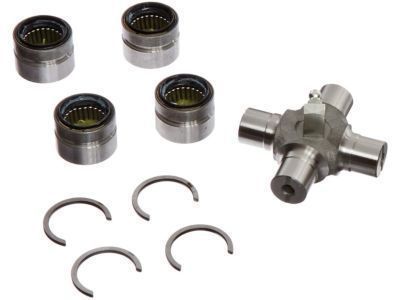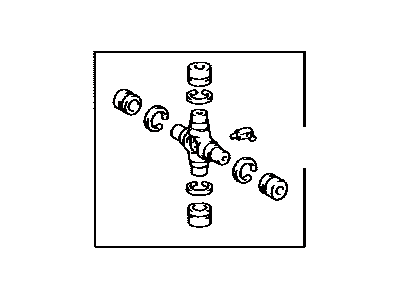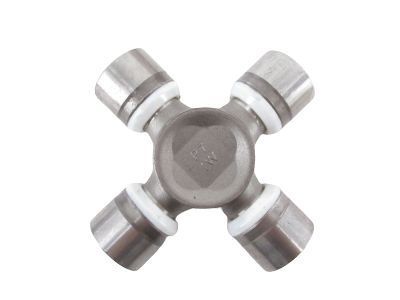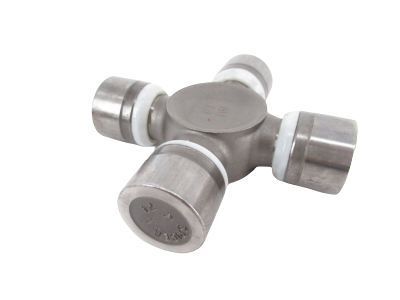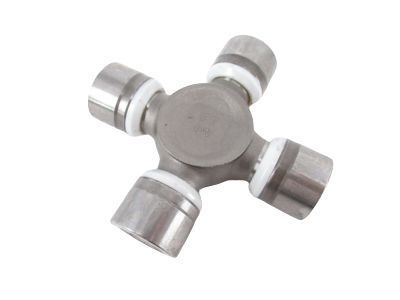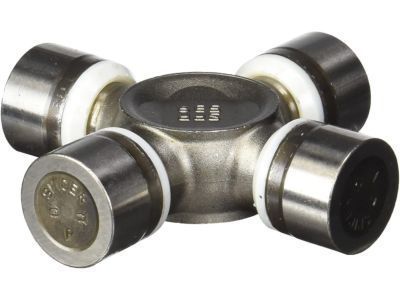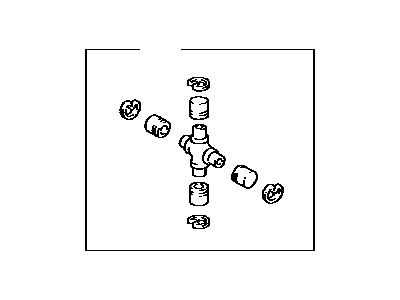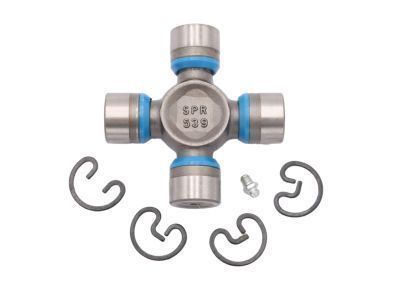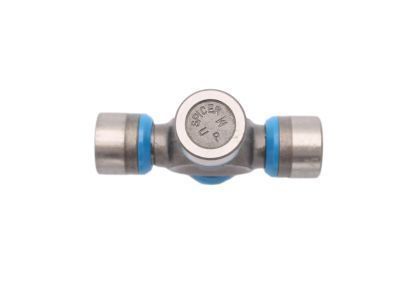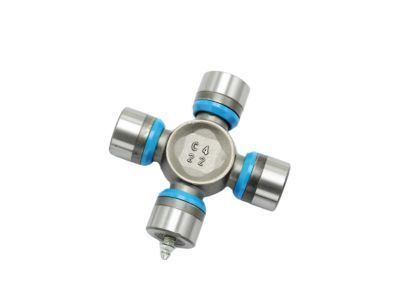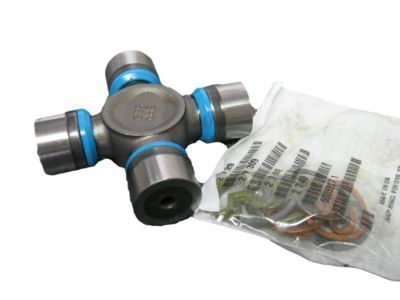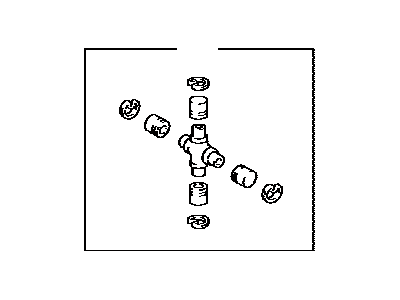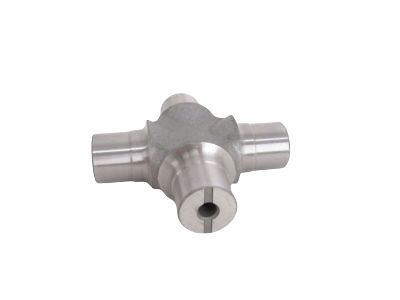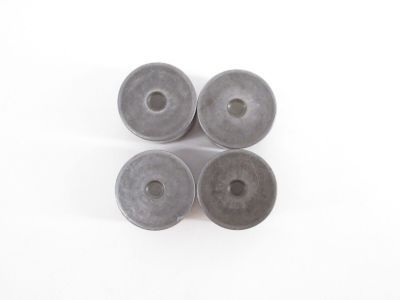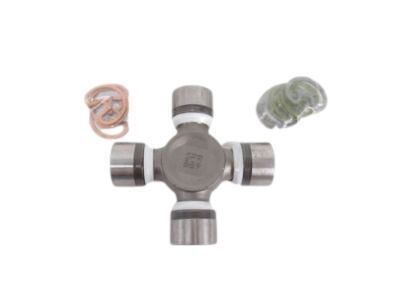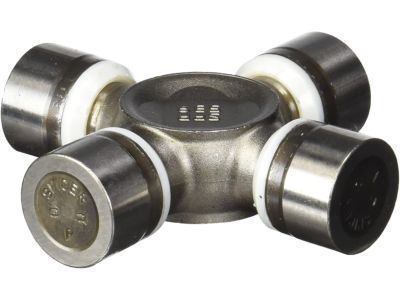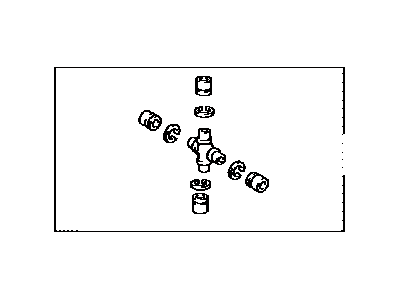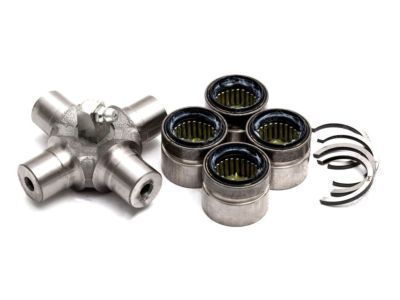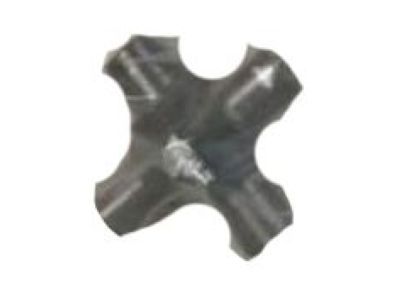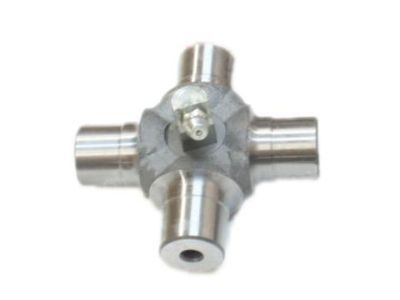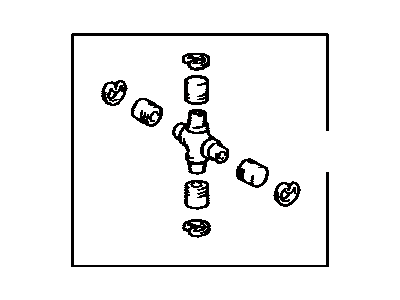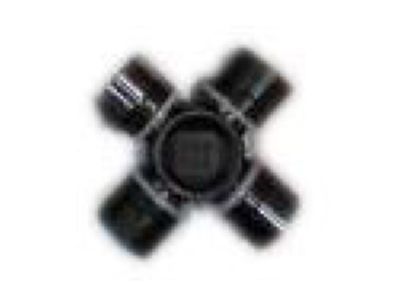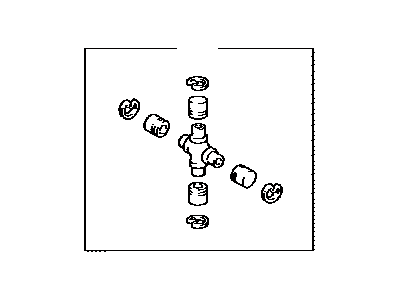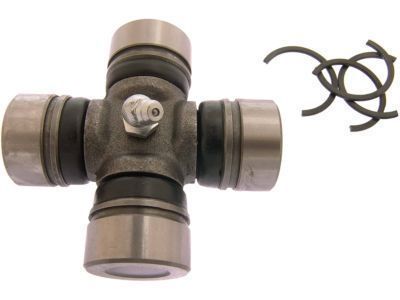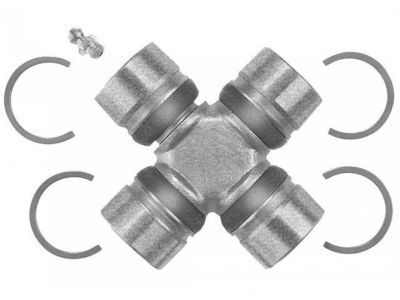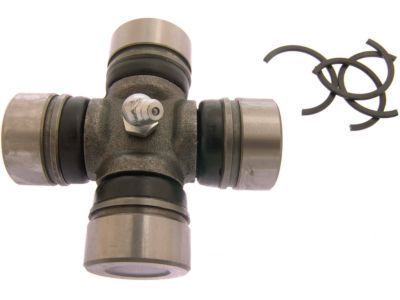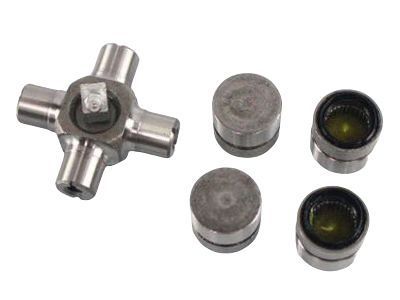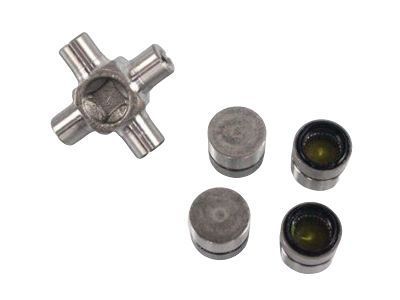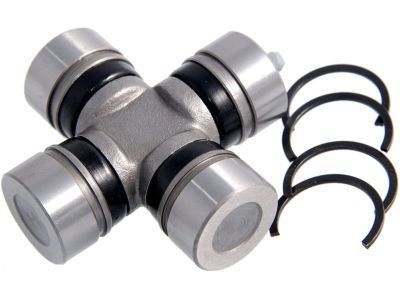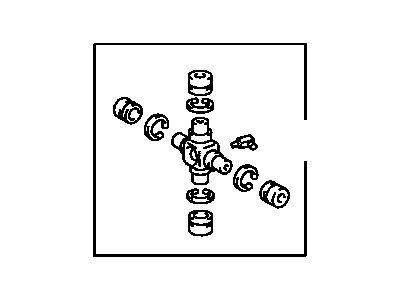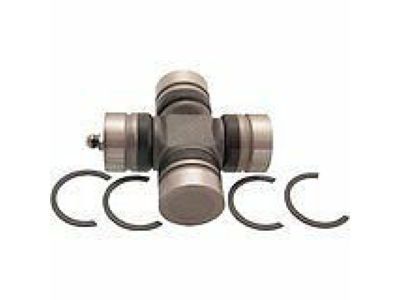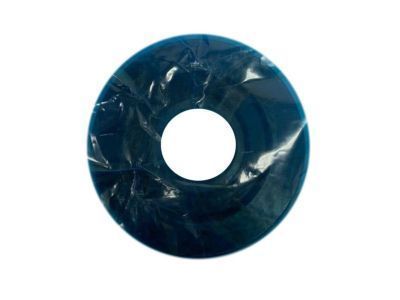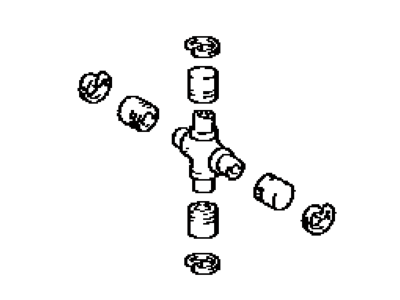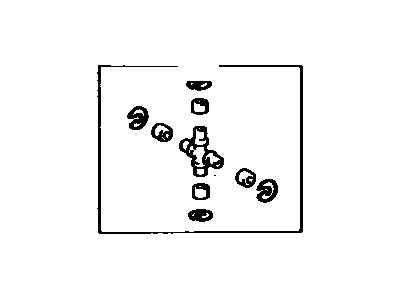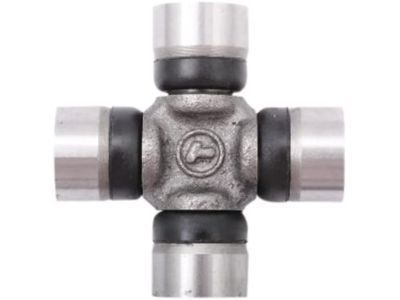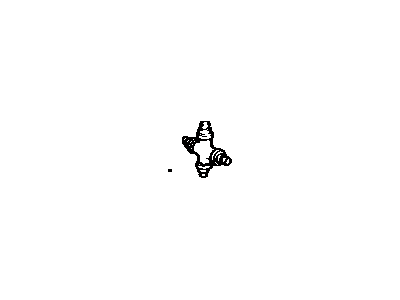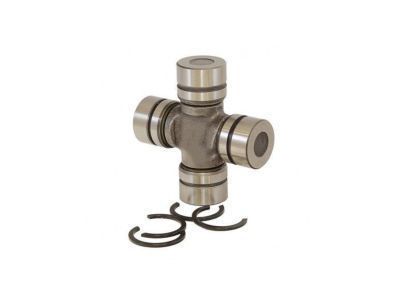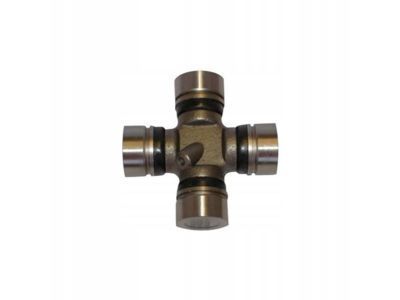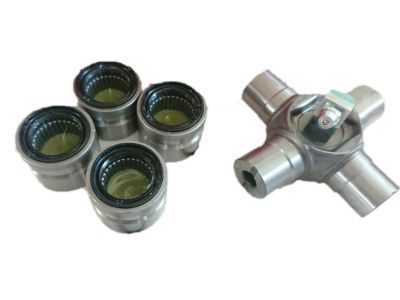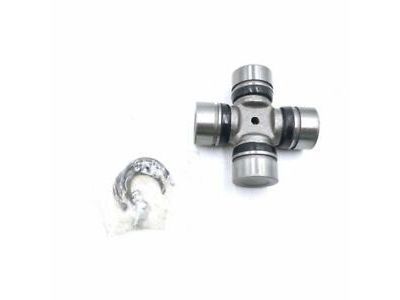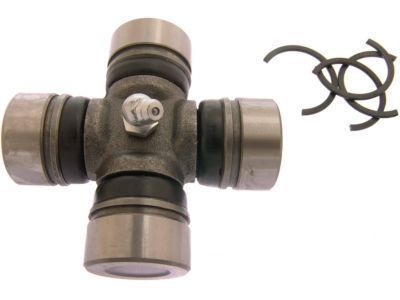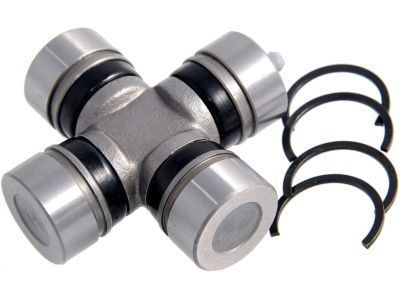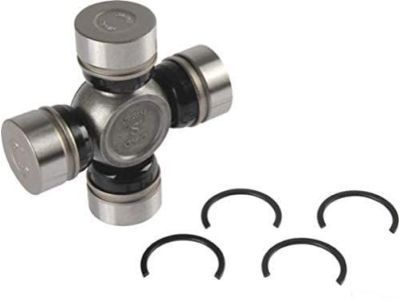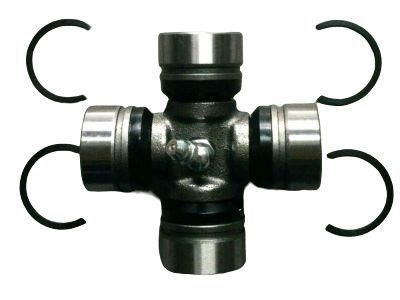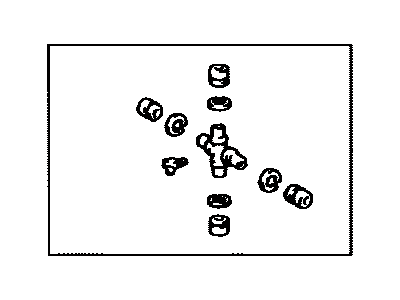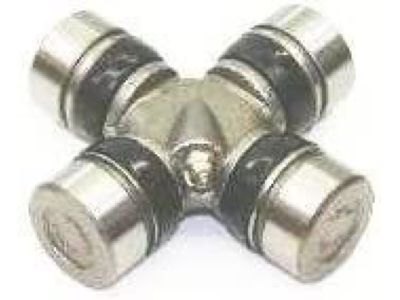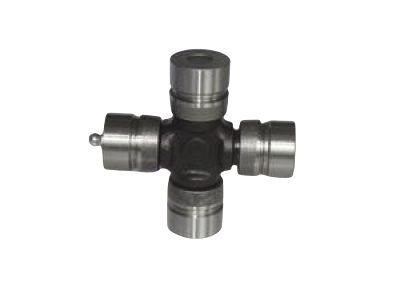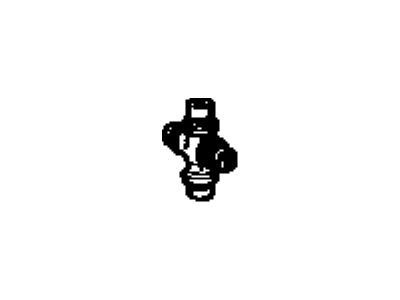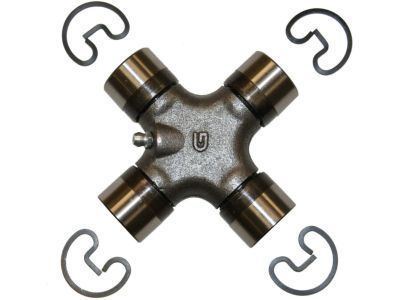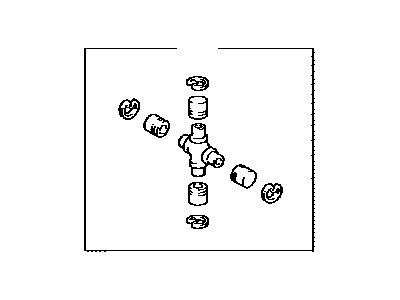

My Garage
My Account
Cart
Genuine Toyota Universal Joint
U-Joint- Select Vehicle by Model
- Select Vehicle by VIN
Select Vehicle by Model
orMake
Model
Year
Select Vehicle by VIN
For the most accurate results, select vehicle by your VIN (Vehicle Identification Number).
67 Universal Joints found
Toyota Spider Kit, Universal Joint
Part Number: 04371-60070$57.11 MSRP: $79.83You Save: $22.72 (29%)Product Specifications- Other Name: Spider Kit, Rear Propeller Shaft Universal Joint; Universal Joints
- Comment: (FOR PROPELLER SHAFT)
- Replaces: 04371-35031, 04371-35050, 04371-35040, 04371-35030, 04371-35051
Toyota Spider Kit, UNIVERSA
Part Number: 04371-04031$60.52 MSRP: $85.31You Save: $24.79 (30%)Ships in 1-3 Business DaysProduct Specifications- Other Name: Universal Joints
- Replaces: 04371-04030, 04371-0K080
Toyota Spider Kit, Universal Joint
Part Number: 04371-0K080$60.52 MSRP: $85.31You Save: $24.79 (30%)Ships in 1-2 Business DaysProduct Specifications- Other Name: Spider Kit, Rear Propeller Shaft Universal Joint
- Comment: (FOR PROPELLER SHAFT)
- Replaced by: 04371-04031
Toyota Spider Kit, Rear Propeller Shaft Universal Joint
Part Number: 04371-60100$56.28 MSRP: $78.66You Save: $22.38 (29%)Ships in 1-2 Business DaysProduct Specifications- Other Name: Universal Joints
- Position: Rear
- Replaces: 04371-30021, 04371-30030, 04371-60080, 04371-30020, 04371-30041, 04371-30040
Toyota Spider Kit, Universal Joint
Part Number: 04371-04030$60.52 MSRP: $85.31You Save: $24.79 (30%)Ships in 1-3 Business DaysProduct Specifications- Other Name: Spider Kit, Universal Joint(For Propeller Shaft)
- Comment: (FOR PROPELLER SHAFT)
- Replaced by: 04371-04031
Toyota Spider Kit, Universal Joint
Part Number: 04371-60060$70.91 MSRP: $99.95You Save: $29.04 (30%)Ships in 1-2 Business DaysProduct Specifications- Other Name: Spider Kit, Front Propeller Shaft Universal Joint; Universal Joints
- Comment: (FOR PROPELLER SHAFT)
- Replaces: 04371-60041, 04371-35061, 37402-35050, 04371-35060, 04371-60040, 37402-35060
Toyota Spider Kit, UNIVERSA
Part Number: 04371-0C084$67.01 MSRP: $94.46You Save: $27.45 (30%)Ships in 1-2 Business DaysProduct Specifications- Other Name: Universal Joints
- Replaces: 04371-0C081, 04371-0C080, 04371-0C094, 04371-0C093, 04371-0C082, 04371-0C090
Toyota Bearing Kit, UNIVERS
Part Number: 04371-35031$57.11 MSRP: $79.83You Save: $22.72 (29%)Ships in 1-3 Business DaysProduct Specifications- Other Name: Spider Kit, Universal Joint(For Propeller Shaft)
- Manufacturer Note: FRONT
- Position: Front
- Replaced by: 04371-60070
Toyota Spider Kit, Universal Joint
Part Number: 04371-35050$57.11 MSRP: $79.83You Save: $22.72 (29%)Ships in 1-3 Business DaysProduct Specifications- Other Name: Spider Kit, Rear Propeller Shaft Universal Joint
- Comment: (FOR PROPELLER SHAFT)
- Replaced by: 04371-60070
Toyota Spider Kit, Front Propeller Shaft Universal Joint
Part Number: 04371-60051$63.24 MSRP: $89.14You Save: $25.90 (30%)Ships in 1 Business DayProduct Specifications- Other Name: Universal Joints
- Position: Front
- Replaces: 04371-60050
Toyota Spider Kit, UNIVERSA
Part Number: 04371-0C010$73.03 MSRP: $102.94You Save: $29.91 (30%)Ships in 1 Business DayProduct Specifications- Other Name: Spider Kit, Front Propeller Shaft Universal Joint
- Replaced by: 04371-04020
Toyota Spider Kit, UNIVERSA
Part Number: 04371-04043$56.28 MSRP: $78.66You Save: $22.38 (29%)Ships in 1 Business DayProduct Specifications- Other Name: Spider Kit, Front Propeller Shaft Universal Joint
- Replaced by: 04371-04044
Toyota Spider Kit,UNIVALSAL
Part Number: 04371-04020$73.03 MSRP: $102.94You Save: $29.91 (30%)Ships in 1-3 Business DaysProduct Specifications- Other Name: Spider Kit, Rear Propeller Shaft Universal Joint; Universal Joints
- Manufacturer Note: DANA
- Replaces: 04371-0C010, 04371-04010
Toyota Spider Kit, Universal Joint
Part Number: 04371-10011$37.35 MSRP: $52.22You Save: $14.87 (29%)Product Specifications- Other Name: Spider Kit, Universal Joint(For Steering Main Shaft); Joint, Spider Assembly, Universal Joints
- Comment: (FOR STEERING MAIN SHAFT)
- Replaces: 04371-10010, 37411-10010, 37411-10011
Toyota Spider Kit, Universal Joint
Part Number: 04371-36021$59.22 MSRP: $83.48You Save: $24.26 (30%)Ships in 1-2 Business DaysProduct Specifications- Comment: (FOR PROPELLER SHAFT)
- Replaced by: 04371-60210
Toyota Spider Kit, Universal Joint
Part Number: 04371-35051$57.11 MSRP: $79.83You Save: $22.72 (29%)Ships in 1-2 Business DaysProduct Specifications- Other Name: Spider Kit, Rear Propeller Shaft Universal Joint
- Comment: (FOR PROPELLER SHAFT)
- Replaced by: 04371-60070
Toyota Spider Kit, Universal Joint
Part Number: 04371-30040$56.28 MSRP: $78.66You Save: $22.38 (29%)Ships in 1-3 Business DaysProduct Specifications- Other Name: Spider Kit, Rear Propeller Shaft Universal Joint
- Comment: (FOR PROPELLER SHAFT)
- Replaced by: 04371-60100
Toyota Spider Kit, Universal Joint
Part Number: 04371-25010$65.36 MSRP: $92.13You Save: $26.77 (30%)Ships in 1-3 Business DaysProduct Specifications- Other Name: Spider Kit, Universal Joint(For Propeller Shaft); Universal Joints
- Manufacturer Note: *AXC=G392 OR G282
- Comment: (FOR PROPELLER SHAFT)
- Replaces: 04371-30010, 37401-39010, 04371-30011, 37411-30020
Toyota Spider Kit, Front Propeller Shaft Universal Joint
Part Number: 04375-0C020$59.93 MSRP: $84.48You Save: $24.55 (30%)Ships in 1-3 Business DaysProduct Specifications- Manufacturer Note: FRONT SIDE,REAR SIDE
- Position: Front
- Replaced by: 04375-0C042
Toyota Spider Kit, UNIVERSA
Part Number: 04371-04044$56.28 MSRP: $78.66You Save: $22.38 (29%)Ships in 1-2 Business DaysProduct Specifications- Other Name: Universal Joints
- Replaces: 04371-04043
| Page 1 of 4 |Next >
1-20 of 67 Results
Toyota Universal Joint Parts Questions & Experts Answers
- Q: How is the Drive Shaft and Universal Joint Constructed and Maintained on 2005-2009 Toyota Tacoma?A:The driveshaft is of a tubular shape and comes in a single piece pertaining to regular cab variants, or in a two-piece variant when it comes to the extended cab variants of the pick-up. It is extremely delicate when it is put into production and when replacing universal joints it would be wise to use general caution; getting it done by a dealership or a specialty shop is usually recommended. If the joints are replaced independently, then it is necessary also to orient each yoke regarding the opposite one and not to drop the assembly during repairing. In 2WD models, there is a more complex structure; at the front part of the 2WD models, there is a splined yoke that is known as the slip yoke or the sleeve yoke to accommodate the sliding of the driveshaft into the transmission case, while an oil seal is incorporated to avoid leaking of the fluid and the entry of dirt into the vehicle. For 4WD models, the driveshafts are linked to the transfer case through the flange yoke; when pulling out a driveshaft, the companion flange can be removed to separately replace the companion seals. The undercoating and mud should be avoided on the driveshaft; apart from that cleaning and checking for damages frequently is advised, when the small weights for balancing are to be fixed securely on the shafts. Any sound or feel of vibration while driving implies driveshaft problems; frequently, a road test can be used to conclude the root of the problem; if one is suspected of being a problem, a check on the driveline is recommended.
Related Toyota Parts
Browse by Model
4Runner Universal Joint Avalon Universal Joint Camry Universal Joint Celica Universal Joint Corolla Universal Joint Corona Universal Joint Cressida Universal Joint FJ Cruiser Universal Joint Highlander Universal Joint Land Cruiser Universal Joint MR2 Universal Joint Pickup Universal Joint Previa Universal Joint Sequoia Universal Joint Starlet Universal Joint Supra Universal Joint T100 Universal Joint Tacoma Universal Joint Tundra Universal Joint Van Universal Joint
